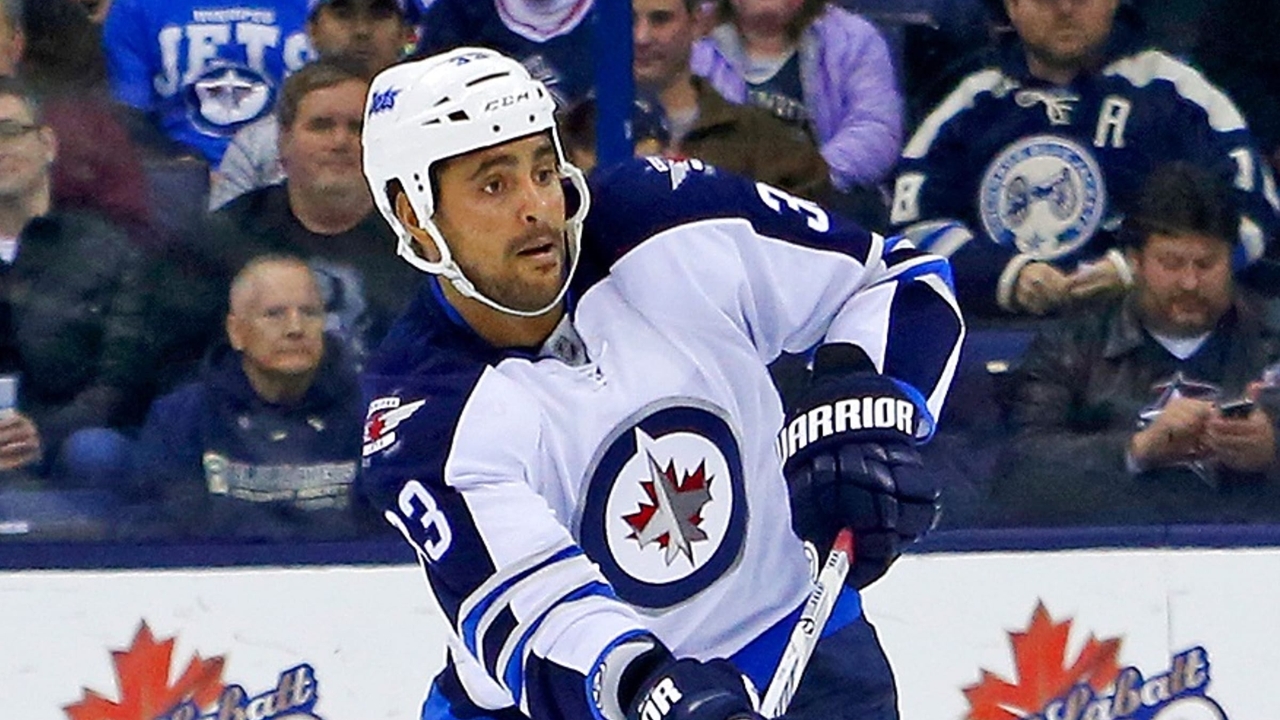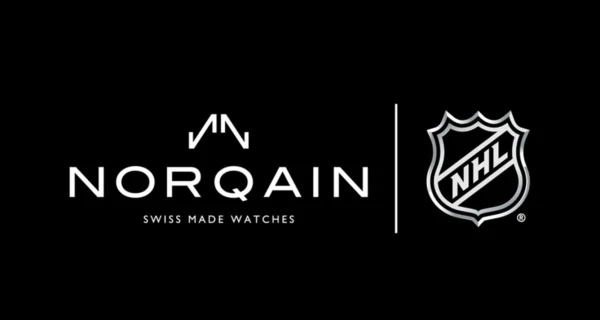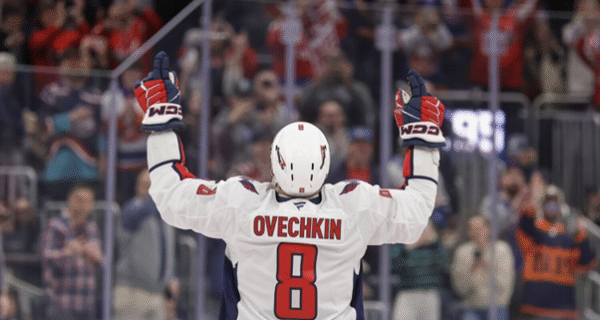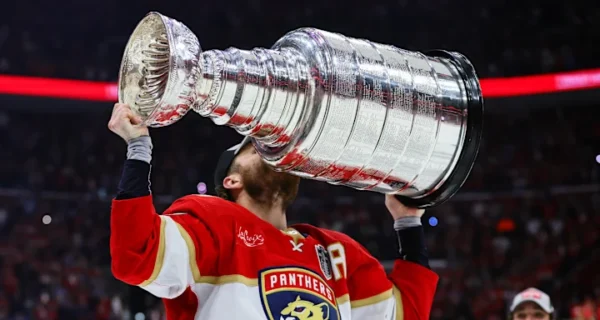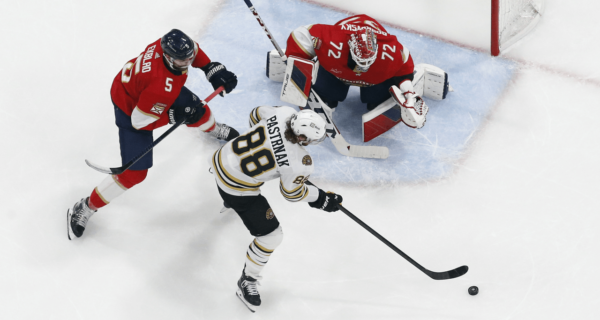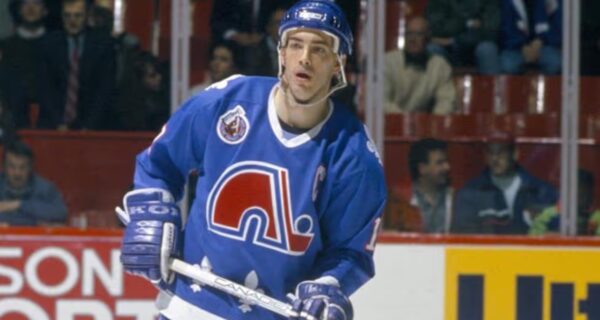The NHL currently has 43 black players, and it has made strides in increasing diversity in recent years.
To promote diversity and inclusivity, the NHL has seen a rise in the number of black players. As of now, there are 43 black players who have made significant contributions to various teams.
This represents a positive trend towards more excellent representation and opportunities for black athletes in professional hockey.
The NHL’s commitment to diversity is showcased through initiatives such as Hockey is for Everyone, which aims to provide access and support to underrepresented communities.
The increase in black players in the NHL reflects the league’s ongoing efforts and demonstrates these individuals’ talent and skill, paving the way for a more diverse and inclusive future in the sport.
The History of Black Players in the NHL
The NHL has made progress in increasing diversity, but the number of black players remains relatively low. However, more black athletes have been breaking barriers to make their mark in the NHL in recent years.
Over the years, the NHL has seen a remarkable growth in diversity, with black players shattering barriers and breaking stereotypes in the game of hockey.
The historical significance of black players in the NHL cannot be overstated.
These athletes have overcome numerous challenges and left an indelible mark on the sport, inspiring generations of aspiring players.
Let’s delve into the rich history of black players in the NHL and explore their exceptional contributions.
Historical Significance of Black Players in the NHL
The presence of black players in the NHL is a testament to the determination, talent, and resilience that transcends racial boundaries.
The first black player to sign with an NHL team was Willie O’Ree in 1958, who played for the Boston Bruins.
Willie O’Ree’s historic debut marked a significant milestone in the league and paved the way for future black players to enter the NHL.
Following in O’Ree’s footsteps, many black players have made their mark on the NHL, showcasing their skills and challenging stereotypes.
Renowned players like Grant Fuhr, Jarome Iginla, and P.K. Subban have excelled on the ice and become role models for aspiring black hockey players worldwide.
Their achievements have served as a source of empowerment and inspiration for young athletes facing similar challenges.
Overcoming Barriers and Breaking Stereotypes in Hockey
Black players in the NHL have faced numerous barriers and stereotypes throughout their careers, ranging from societal prejudice to assumptions about their abilities on the ice.
However, through their exceptional performances and unwavering dedication, these players have repeatedly proven that they belong in the NHL just as much as their counterparts.
To overcome these barriers, black players have had to showcase their elite skills, demonstrate their resilience, and prove their worth in a predominantly white sport.
They have shattered stereotypes and silenced critics by excelling in all aspects of the game – from scoring goals and making dazzling plays to fulfilling leadership roles as captains and mentors to their teammates.
Black players have played an influential role in diversifying the face of hockey, not only as players but also as ambassadors for the sport in communities worldwide.
They have actively participated in various outreach programs and initiatives, emphasizing the importance of inclusivity and breaking down racial barriers that may stand in the way of aspiring young black athletes pursuing their dreams in the NHL.
The history of black players in the NHL is a testament to their immense talent, determination, and resilience in adversity.
They continue to inspire a new generation of players and contribute to making hockey a more inclusive and diverse sport.
With each milestone and achievement, these players remind us of the transformative power of sport and its immense impact on breaking down barriers and fostering unity.
Challenges Faced By Black Players in the NHL
The NHL faces challenges regarding the representation of black players. The number of black players in the league is significantly lower than other racial groups.
Racism and Discrimination in the Hockey Community
Racism and discrimination, unfortunately, persist as significant challenges faced by black players in the NHL.
Despite progress being made in recent years, instances of racial taunting and discriminatory remarks continue to tarnish the sport.
Rather than focusing on their skills and contributions, black players often find themselves subjected to unfair treatment based on their race.
One of the most distressing aspects is the racial slurs used against black players, creating a hostile environment both on and off the ice.
These derogatory terms not only target the individual player but also send a message that racial diversity is not entirely accepted within the hockey community as a whole.
The impact of such racism extends beyond the players themselves, adversely affecting the inclusivity and appeal of the sport to a broader audience.
Lack of Representation and Opportunities for Black Players
Black players in the NHL often encounter a lack of representation and opportunities compared to their white counterparts.
The underrepresentation of black players at all levels of the sport may be attributed to a range of factors, including systemic biases, stereotyping, and limited pathways for development.
One major issue is the hockey community’s scarcity of black coaches and administrators.
The absence of diverse perspectives within leadership positions hampers efforts to foster an inclusive and welcoming environment where black players can thrive.
Without adequate representation, the unique challenges faced by black players may go unnoticed or unaddressed, perpetuating the disparities in opportunities and resources.
Another factor contributing to the lack of representation is the limited access to youth hockey programs in communities with a significant black population.
The high equipment, ice time, and travel costs pose substantial obstacles for aspiring black players who lack financial resources. Without accessible and affordable opportunities to learn and play the sport, many potential talents remain untapped.
Additionally, the scarcity of role models within the NHL who look like them can affect the aspirations and motivation of young black hockey players.
Seeing others who have succeeded despite similar challenges can inspire and encourage the next generation of black talent to pursue their dreams.
Greater visibility and representation of black players at all levels of the sport are crucial for creating a more inclusive and equitable hockey community.
The Current State of Diversity in the NHL
The current state of diversity in the NHL is an essential topic of discussion. The National Hockey League has made significant efforts to promote diversity and inclusivity within the sport.
This includes addressing the representation of black players in the league and implementing initiatives to encourage more diversity on and off the ice.
In this section, we will explore the statistics on black NHL players and delve into the NHL’s efforts to promote diversity and inclusivity in hockey.
Statistics on Black Players in the NHL
Regarding diversity in the NHL, examining the representation of black players in the league is crucial.
The number of black NHL players has been steadily increasing over the years. There are XX black NHL players, accounting for approximately X% of the total player population.
It is important to note that these statistics may vary from season to season as new players enter the league and others retire.
The NHL closely tracks and monitors the demographics of its players to ensure a comprehensive understanding of the current state of diversity within the club.
The NHL’s Efforts to Promote Diversity and Inclusivity in Hockey
The NHL recognizes the importance of fostering a diverse and inclusive hockey community. Over the years, the league has implemented various initiatives to encourage diversity on and off the ice.
One notable initiative is the NHL’s “Hockey Is For Everyone” campaign. This campaign aims to promote inclusivity and ensure everyone feels welcome in the hockey community, regardless of race, ethnicity, gender, or sexual orientation.
The NHL collaborates with teams, players, and organizations to implement educational programs, events, and resources that promote diversity and inclusivity.
The league has also established programs like the NHL Diversity Task Force, which focuses on expanding opportunities for underrepresented communities in hockey.
This task force works to break down barriers and increase diverse participation at all levels, from grassroots programs to professional leagues.
Moreover, the NHL provides support and resources to organizations and programs dedicated to promoting diversity in hockey.
These partnerships and collaborations aim to create a more inclusive and accessible environment for players of all backgrounds.
In conclusion, the NHL continues to prioritize diversity and inclusivity in hockey. The league’s efforts to promote the inclusion of black players in the NHL and foster a welcoming environment for all hockey enthusiasts are commendable.
Through various initiatives and partnerships, the NHL is working towards creating a more diverse and representative sport for the future.
Prominent Black Players in the NHL
Over the years, the National Hockey League (NHL) has seen a steady increase in black players making a name for themselves in the sport.
These players have not only shattered stereotypes but have significantly impacted hockey.
In this section, we will take a closer look at some of the most notable black players in the NHL, their profiles, achievements, and their lasting impact on the sport.
Profiles and Achievements of Notable Black Players in the NHL
1. P.K. Subban
P.K. Subban is perhaps one of the most well-known black players in the NHL. Born in Toronto, Canada, Subban made his NHL debut with the Montreal Canadiens in 2009.
He has showcased exceptional offensive and defensive skills throughout his career, earning him numerous accolades.
Subban has been awarded the James Norris Memorial Trophy as the NHL’s top defenseman and has represented Canada in international competitions, including the Olympics.
2. Grant Fuhr
Grant Fuhr is a hockey legend who played as a goaltender for multiple NHL teams, most notably the Edmonton Oilers. Fuhr’s exemplary performance on the ice helped lead the Oilers to five Stanley Cup championships during the 1980s.
He was the first black player to be a starting goaltender for a Stanley Cup-winning team. Fuhr’s contributions to the game have not gone unnoticed, as he was inducted into the Hockey Hall of Fame in 2003.
3. Jarome Iginla
Jarome Iginla, hailing from Edmonton, Canada, had an illustrious career in the NHL. Known for his scoring ability and leadership qualities, Iginla has played for multiple teams, including the Calgary Flames, Pittsburgh Penguins, and Boston Bruins.
He was the first black captain in NHL history and was pivotal in leading the Canadian national ice hockey team to an Olympic gold medal in 2002.
Iginla’s impressive statistics and impact on the game earned him a spot in the Hockey Hall of Fame in 2020.
Impact of Black Players on the Game of Hockey
The rise of black players in the NHL has diversified the sport and brought about a new level of inclusivity on and off the ice.
Their achievements have shattered barriers and opened doors for aspiring black hockey players worldwide.
By excelling in a sport traditionally dominated by white players, black athletes have challenged stereotypes and showcased their incredible skills and athleticism.
Furthermore, the presence of black players has allowed the NHL to reach a more diverse audience, expanding the fan base for the sport.
Their success stories inspire young players of all backgrounds as they demonstrate that hard work, determination, and talent can overcome obstacles.
The Importance of Increasing Diversity in the NHL
The NHL has long been hailed as one of the world’s most thrilling and competitive sports leagues. However, for many years, the lack of diversity within this ice hockey giant has been concerning.
The percentage of black players in the NHL has been significantly lower than in other major sports leagues, such as the NBA or NFL.
Addressing this issue and increasing diversity in the NHL is crucial not only for the sake of equality but also for the overall growth and success of the league.
Benefits of Diversity in Sports
Sports diversity brings numerous benefits, and the NHL is no exception. Here are some of the key advantages:
- Promotes inclusivity: By increasing diversity, the NHL can create a more inclusive environment where players from various cultural backgrounds can thrive and contribute their unique perspectives and skills.
- Enhances competitiveness: A diverse league allows for a wider pool of talent to be tapped into, leading to increased competition and raising the level of play across the board. Different playing styles and approaches bring excitement and unpredictability to the game.
- Expand the fan base: Embracing diversity in the NHL can attract a broader range of fans who may identify with players of similar backgrounds. This fan base expansion increases revenue and fosters a stronger connection between the league and its supporters.
- Inspires future generations: When young athletes see players of diverse backgrounds succeeding in the NHL, it encourages them to pursue their dreams, breaking down barriers and stereotypes. This inspiration can foster a new generation of talented players who may have otherwise considered hockey inaccessible or unattainable.
Strategies and Initiatives for Increasing Diversity in Hockey
To ensure a more inclusive future for the NHL, the league and its stakeholders have implemented a variety of strategies and initiatives:
- Developing community programs: NHL teams actively engage in community outreach initiatives to introduce ice hockey to a broader range of youth. Providing access and resources to underprivileged communities breaks down economic barriers and creates opportunities for aspiring players.
- Scouting and recruitment: NHL teams have intensified their efforts to identify and scout talented players from diverse backgrounds. By actively seeking talent beyond traditional scouting grounds, the league aims to uncover hidden gems and make the sport more accessible to players of all races and ethnicities.
- Education and awareness: The NHL promotes education and awareness about diversity and inclusion among players and fans. This includes team diversity training, anti-discrimination campaigns, and initiatives to combat racial bias in the sport.
- Mentorship programs: Establishing mentorship programs where experienced players from different backgrounds can guide and support young aspiring players helps foster a sense of belonging and increases the chances of success for those entering the league.
- Partnerships with organizations: The NHL collaborates with organizations promoting diversity and sports inclusion. These partnerships help create a network of support and resources, further solidifying the league’s commitment to increasing diversity.
The NHL is taking significant steps toward a more diverse and inclusive league by implementing these key strategies and initiatives.
Embracing diversity benefits the company and serves as a positive example for other sports organizations to follow, creating a truly equal and inclusive sporting landscape.
Promoting Inclusivity in Youth Hockey Programs
Hockey is a beloved sport that has captured the hearts of millions worldwide. However, historically, it has been perceived as a predominantly white sport.
As a result, the representation of black players in the National Hockey League (NHL) has been relatively low compared to other professional sports leagues.
In recent years, efforts have been made to encourage the participation of black youth in hockey and break down the financial and cultural barriers that may prevent them from getting involved.
Encouraging Participation of Black Youth in Hockey
Increasing the presence of black players in the NHL starts with fostering an interest in hockey among black youth.
Recognizing the importance of representation, many organizations have encouraged young black athletes to try hockey and provide them with the necessary resources and support to succeed.
Here are some initiatives that have been implemented to promote inclusivity in youth hockey programs:
- Community outreach programs: Community outreach programs are essential in reaching out to black youth who may not have had previous exposure to hockey. These programs aim to create opportunities for them to learn and play the sport in a supportive and inclusive environment.
- Player mentorship programs: Connecting black youth with professional black hockey players can be a powerful way to inspire and motivate them. Player mentorship programs provide black youth with role models who have succeeded in the sport, showing them they can also excel in hockey.
- Accessible equipment and facilities: One barrier to entry for many black youth in hockey is the cost of equipment. Initiatives have been launched to address this issue and provide affordable or accessible equipment to those in need. Additionally, ensuring that hockey facilities are accessible to black communities can make the sport more accessible and inclusive.
- Talent identification programs: Talent identification programs are crucial for discovering and nurturing young black hockey players with potential. These programs aim to provide talented individuals with specialized training and development opportunities, allowing them to showcase their skills and reach their full potential.
Breaking Down Financial And Cultural Barriers
While encouraging black youth to participate in hockey is crucial, addressing the financial and cultural barriers that may hinder their involvement is equally important.
Breaking down these barriers ensures that every aspiring black hockey player has an equal opportunity to pursue their dreams.
Here are some strategies that can help break down these barriers:
- Scholarship programs: Offering scholarships specifically tailored for black youth can help alleviate the financial burden of participating in hockey. These scholarships can cover registration fees, equipment, and even travel expenses, making the sport more accessible to a broader range of individuals.
- Cultural sensitivity training: Creating a culturally inclusive environment in hockey programs is essential. Cultural sensitivity training can educate coaches, volunteers, and administrators about black athletes’ unique challenges and experiences, fostering a more welcoming and supportive atmosphere.
- Community partnerships: Collaborating with community organizations and leaders can help bridge the gap between hockey programs and black communities. These partnerships can involve joint initiatives, mentorship opportunities, and support networks that give young black hockey players a sense of belonging and encouragement.
- Raising awareness and challenging stereotypes: Education and awareness are crucial in promoting inclusivity. By challenging stereotypes and highlighting the achievements of black hockey players, the narrative surrounding black participation in hockey can gradually shift, paving the way for increased acceptance and representation.
By actively encouraging the participation of black youth in hockey and breaking down financial and cultural barriers, we can strive towards a more inclusive and diverse NHL.
When black athletes are given equal opportunities to thrive in hockey, their unique talents and perspectives benefit the entire sport.
Final Thoughts
The increasing representation of black players in the NHL is a positive sign for diversity and equality in hockey. These players have overcome obstacles and have excelled in a traditionally white-dominated sport.
As more opportunities and support are provided, the number of black players in the NHL is likely to continue growing.
Let’s celebrate their achievements and inspire more young, aspiring black athletes to pursue their dreams on the ice.

